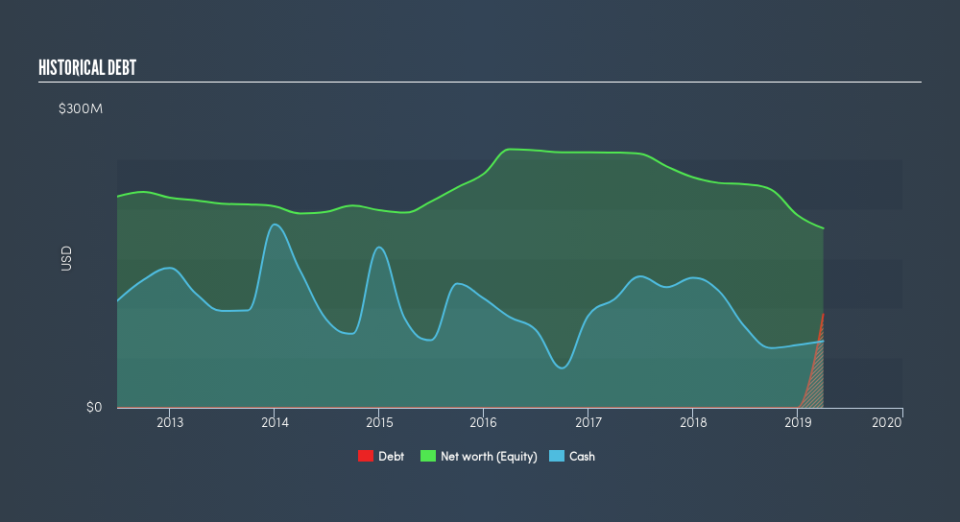Is FreightCar America, Inc.'s (NASDAQ:RAIL) Balance Sheet Strong Enough To Weather A Storm?

Want to participate in a short research study? Help shape the future of investing tools and you could win a $250 gift card!
FreightCar America, Inc. (NASDAQ:RAIL) is a small-cap stock with a market capitalization of US$83m. While investors primarily focus on the growth potential and competitive landscape of the small-cap companies, they end up ignoring a key aspect, which could be the biggest threat to its existence: its financial health. Why is it important? Since RAIL is loss-making right now, it’s vital to assess the current state of its operations and pathway to profitability. Let's work through some financial health checks you may wish to consider if you're interested in this stock. However, this is not a comprehensive overview, so I suggest you dig deeper yourself into RAIL here.
RAIL’s Debt (And Cash Flows)
Over the past year, RAIL has borrowed debt capital of around US$94m accounting for long term debt. With this ramp up in debt, RAIL currently has US$67m remaining in cash and short-term investments , ready to be used for running the business. We note it produced negative cash flow over the last twelve months. For this article’s sake, I won’t be looking at this today, but you can take a look at some of RAIL’s operating efficiency ratios such as ROA here.
Can RAIL pay its short-term liabilities?
At the current liabilities level of US$69m, it appears that the company has been able to meet these commitments with a current assets level of US$138m, leading to a 2.01x current account ratio. The current ratio is calculated by dividing current assets by current liabilities. For Machinery companies, this ratio is within a sensible range since there is a bit of a cash buffer without leaving too much capital in a low-return environment.
Is RAIL’s debt level acceptable?
RAIL is a relatively highly levered company with a debt-to-equity of 52%. This is somewhat unusual for small-caps companies, since lenders are often hesitant to provide attractive interest rates to less-established businesses. But since RAIL is currently unprofitable, there’s a question of sustainability of its current operations. Running high debt, while not yet making money, can be risky in unexpected downturns as liquidity may dry up, making it hard to operate.
Next Steps:
RAIL’s high cash coverage means that, although its debt levels are high, the company is able to utilise its borrowings efficiently in order to generate cash flow. This may mean this is an optimal capital structure for the business, given that it is also meeting its short-term commitment. I admit this is a fairly basic analysis for RAIL's financial health. Other important fundamentals need to be considered alongside. I recommend you continue to research FreightCar America to get a more holistic view of the small-cap by looking at:
Future Outlook: What are well-informed industry analysts predicting for RAIL’s future growth? Take a look at our free research report of analyst consensus for RAIL’s outlook.
Valuation: What is RAIL worth today? Is the stock undervalued, even when its growth outlook is factored into its intrinsic value? The intrinsic value infographic in our free research report helps visualize whether RAIL is currently mispriced by the market.
Other High-Performing Stocks: Are there other stocks that provide better prospects with proven track records? Explore our free list of these great stocks here.
We aim to bring you long-term focused research analysis driven by fundamental data. Note that our analysis may not factor in the latest price-sensitive company announcements or qualitative material.
If you spot an error that warrants correction, please contact the editor at editorial-team@simplywallst.com. This article by Simply Wall St is general in nature. It does not constitute a recommendation to buy or sell any stock, and does not take account of your objectives, or your financial situation. Simply Wall St has no position in the stocks mentioned. Thank you for reading.

